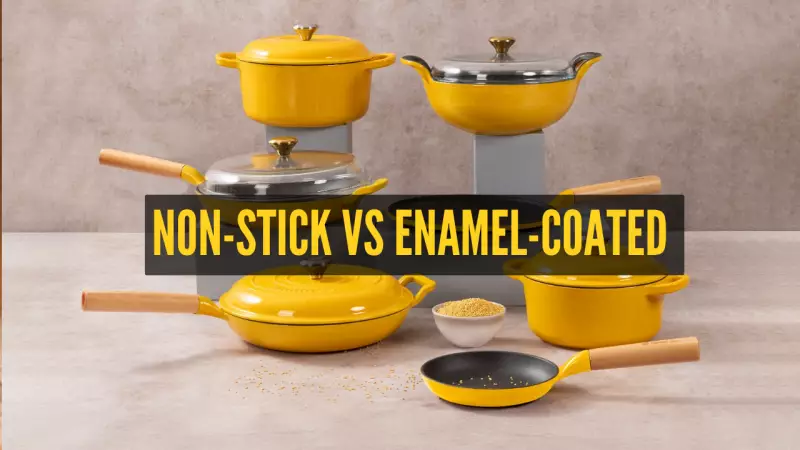
The Changing Landscape of Indian Kitchens
For generations, Indian households have selected cookware based on traditional preferences: aluminum for its lightweight properties, stainless steel for durability, and non-stick coatings for cooking convenience. However, a significant transformation is underway as health-conscious consumers begin questioning what materials actually contact their food during cooking.
The Indian cookware market, valued at over ₹20,000 crore, is experiencing a fundamental shift from legacy-driven purchases to informed decisions based on safety and scientific evidence. What was once considered a low-involvement category has rapidly become a crucial conversation within the broader health and home segment.
The Non-Stick Dilemma and Health Concerns
Non-stick cookware has dominated Indian kitchens for decades, offering undeniable benefits like reduced oil usage, easier cleaning, and faster cooking times. However, this convenience has come with hidden compromises that consumers are now recognizing.
Most conventional non-stick coatings utilize polymer-based materials, many belonging to the PFAS family of chemicals. These substances, increasingly known as forever chemicals, face global scrutiny due to their environmental persistence and potential health implications when cookware becomes overheated or damaged.
While markets like the European Union and United States are implementing stricter regulations around PFAS usage, Indian markets continue to feature non-stick products prominently, primarily due to affordability and consumer familiarity rather than demonstrated safety. This growing gap between available products and advisable choices has never been more apparent to educated consumers.
Innovative Alternatives Enter the Market
Progressive brands are responding to health concerns by developing safer cooking technologies. Companies like Cumin Co have introduced innovations such as their Enviromax coating, which employs a four-layer enamel technology specifically engineered for Indian cooking conditions.
This advanced approach combines glass-based, non-porous surfaces with metal's inherent durability, creating cookware that resists rust, stains, and chemical reactions even during prolonged, high-temperature cooking sessions. Unlike conventional enamel that may crack or discolor with repeated use, this new generation technology withstands the unique demands of Indian culinary practices: extended cooking durations, spiced gravies, and high-heat searing.
By completely eliminating polymers and PFAS chemicals, these innovations maintain food purity without compromising performance, demonstrating that cookware longevity and safety can successfully coexist.
India's Cookware Industry at a Critical Juncture
Despite the market's substantial size, innovation has struggled to keep pace with growing consumer awareness. While food and beauty sectors have experienced clean, health-focused revolutions, cookware development has lagged decades behind.
The average Indian buyer traditionally associates quality with superficial characteristics like shine, weight, or brand recognition rather than safety specifications or scientific manufacturing processes. This perspective is gradually changing as digitally-native, design-focused brands educate consumers, promote safer materials, and demand greater transparency from supply chains.
Similar to other consumer categories, trust is emerging as the ultimate differentiator in cookware selection. The future of India's cookware industry will belong to brands that establish this trust through measurable, material innovations rather than mere marketing claims.
The Future of Indian Cookware: Three Key Shifts
As the market matures, three significant transformations are becoming increasingly evident:
Transparency Over Tradition: Future growth will favor brands that clearly disclose coating compositions and their rationales. Consumers increasingly reject vague food-safe assurances, demanding specific information about what touches their food.
Designed for Indian Kitchens: Products developed for Western cooking styles frequently fail under Indian cooking intensity. The combination of high heat, abundant spices, significant oil usage, and frequent cooking requires materials specifically engineered for local conditions.
Longevity as Sustainability: As waste consciousness grows, consumers will evaluate cookware based on its complete lifecycle. Durable materials like advanced enamel that resist peeling and corrosion will lead this sustainability shift.
India stands at the threshold of a cookware revolution driven by science, health consciousness, and sustainability rather than habit alone. The transition from conventional non-stick to safer alternatives represents more than just changing consumer preferences—it signals a fundamental industry realignment. In a nation where food represents cultural identity, the tools used for cooking deserve the same thoughtful consideration as the meals they help create.





